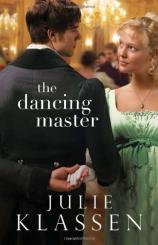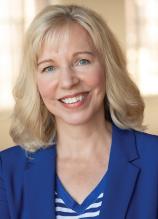Author Talk: January 2013
Three-time Christy Award winner Julie Klassen certainly knows her way around 19th-century romance. Her latest novel, THE DANCING MASTER, is also her first to offer a strong male perspective. In this interview, Klassen discusses writing from that particular point of view, as well as writing for a female who is more complicated and flawed than your standard romance novel heroine. She also talks about all the fun ways she researched 19th-century dancing, and why dancing in Regency England was such a torrid affair.
Question: Can you tell us what the book is about?
Julie Klassen: Dancing master Alec Valcourt is forced to leave his London academy and move his mother and sister to remote Devonshire. There he hopes to start again, but when he arrives, he is stunned to learn the village matriarch has prohibited all dancing for reasons buried deep in her past. Alec finds an unlikely ally in the matriarch’s daughter, and the two join forces to uncover old secrets, and restore life to the village.
Q: What inspired you to write about dancing and a dance teacher?
JK: I learned to dance the box step standing atop my father’s size 15 triple E shoes, and then went on to take every ballroom dance class I could sign up for at the University of Illinois from legendary instructor Aurora Villacorta. Later, I even taught a few dance classes of my own through Community Ed. So perhaps it’s little wonder I wrote about a dance teacher, or “dancing master” as they were called in Jane Austen’s time, when the mere touch of hands at a ball sparked romance. I enjoyed drawing on all of these experiences to write the book.
Q: How is this book different from your other books?
JK: A few ways. One --- there is a man on the cover! The book is written from both the male and female characters’ points of view, but the male protagonist features more prominently than in some of my other novels. He is, after all, in the title role of the dancing master. Another way the book is different is that the female lead is not the typical sweet, self-sacrificing heroine. Early on, she is a bit reckless, flirtatious and difficult. But like many people in real life, there is more going on beneath the surface --- and in her past --- that has made her who she is. As the story unfolds and secrets are revealed, I hope readers, like the hero, will come to understand her and become fond of her, especially as she begins to grow and change.
Q: How did you research the dances and dancing instructors of this era?
JK: I read the diary of the dancing master to Queen Victoria’s children as well as dance instructions from the 18th and 19th centuries. My husband and I went English country dancing several times, and this fall I attended dance classes at the annual meeting of the Jane Austen Society of North America. Research has never been so enjoyable!
Q: Can you give us a little historical background about dancing in this time period?
JK: In 19th-century England, dancing at a ball, under the watchful eyes of chaperones, was the primary way young people met and courted. It was considered so vital that parents hired dancing masters (teachers) to come into their homes and teach their sons and daughters this important social skill.
Q: What are the major themes you explore in this novel?
JK: The main themes are love and grace. I enjoyed weaving in grace in its many forms --- social graces, grace in dancing and, most importantly, God’s grace.
Q: Is this book a part of a series?
JK: No, like all of my books so far, THE DANCING MASTER is a stand-alone novel.
Q: Are your books available in other formats?
JK: Yes, my books are also available as e-books and audio books. Most have been published in large print versions as well. They are available in the inspirational section of your local bookstore, from online booksellers or by calling 1-866-241-6733.




